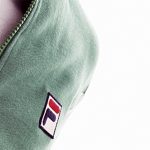American Bird Conservancy has petitioned the U.S. Environmental Protection Agency (EPA) to ban the import of crops containing any residues of 13 pesticides that are banned or restricted for use in the United States.

“Allowing residues of these hazardous pesticides on imported food gives tacit U.S. approval to foreign countries to use chemicals that are known to be deadly to U.S. migratory birds,” said Dr. Michael Fry, American Bird Conservancy's Director of Conservation Advocacy. “EPA has an obligation under Executive Order 13186, the Migratory Bird Treaty Act, and the Endangered Species Act to ensure that migratory birds are not harmed.”
Many Latin American countries that currently use these pesticides export coffee, bananas, citrus crops, and other fruits and vegetables to the United States. Agricultural areas – in particular shade coffee farms – provide valuable habitat for migratory birds, and so pesticide use in these areas can pose a significant threat to bird populations.
“The EPA must protect U.S. migratory birds on their wintering grounds by preventing these pesticides from being imported on food products,” says Dr. Fry. “Doing so will encourage the use of safer pesticides and organic farming practices by foreign growers, at least for those crops that are imported into the U.S.”
American Bird Conservancy is seeking to revoke the import tolerances for cadusafos, cyproconazole, diazinon, dithianon, diquat, dimethoate, fenamiphos, mevinphos, methomyl, naled, phorate, terbufos, and dichlorvos.
The Avian Incident Monitoring System (AIMS), a database of bird-pesticide interactions maintained for the public by American Bird Conservancy, has records of bird deaths resulting from nearly all of the 13 petitioned pesticides before they were cancelled in the U.S. For example, 388 birds, including cedar waxwings, mourning doves, and bluebirds were killed by fenamiphos; phorate killed nearly 3,000 birds in 32 separate incidents, among them black necked stilts, eastern bluebirds, and many waterfowl.
Background
Cadusafos: EPA estimates that cadusafos is used on about 10-15% of the annual banana imports into the U.S. The principal countries exporting bananas treated with cadusafos to the U.S. are Guatemala, Costa Rica, Ecuador, Colombia, Mexico, and Honduras. These countries provide habitat for significant numbers of migratory birds, and the continued use of this pesticide overseas, particularly in granular form, is an unacceptable risk to these birds.
Diazinon: Diazinon is highly toxic to birds and has been documented as the culprit in over four hundred incidents that have left over 4,000 birds dead. The EPA says diazinon poses an unacceptable risk to agricultural workers and to birds and other wildlife species. Mitigation measures, such as prohibiting use of a granular formulation that is particularly dangerous for birds, limit its use in the U.S., but these mitigation measures may not be conducted overseas.
Diquat: Diquat is toxic to humans and it is recommended that people avoid exposure to crops for seven days after its use. However, birds will continually utilize habitat such as coffee plantations during and after pesticide application, placing them at risk. Dimethoate and methomyl also pose a risk to workers, who are recommended to avoid treated crops for 48 and 72 hours respectively after use.Methomyl is also particularly toxic to birds.
Phorate: The EPA has determined that phorate “…is very highly toxic to fish and wildlife,” and that “birds and mammals may be killed if granules are not properly covered with soil in all areas of the treated field and in loading areas.” Workers should avoid entering fields with phorate exposure for 48 to 72 hours after use. Phorate is used in granular form, which is especially hazardous to birds foraging for seeds or grit; it is used on coffee crops, and there is documentation of bird kills due to phorate.
Terbufos: Terbufos is an organophosphate insecticide, a type of chemical which is universallyparticularly toxic to birds. Birds will continuously use coffee plantation habitat while terbufos is being sprayed. Humans are restricted from entering an area where this pesticide is being applied for 48 hours, but no such restriction is possible for birds, heightening their risk of exposure.















